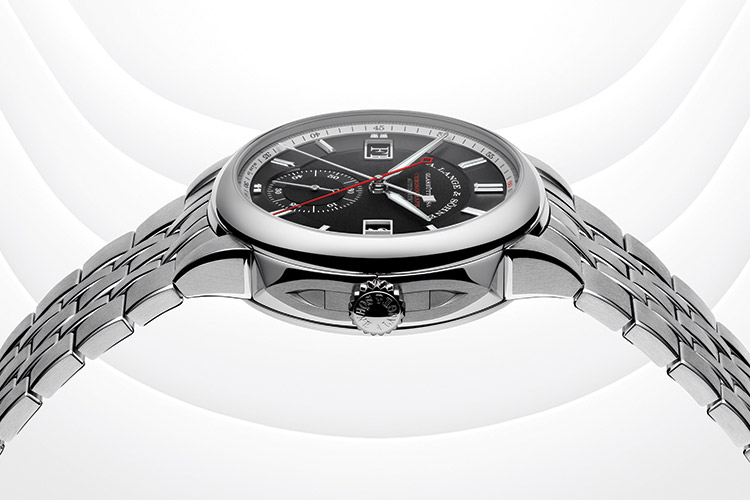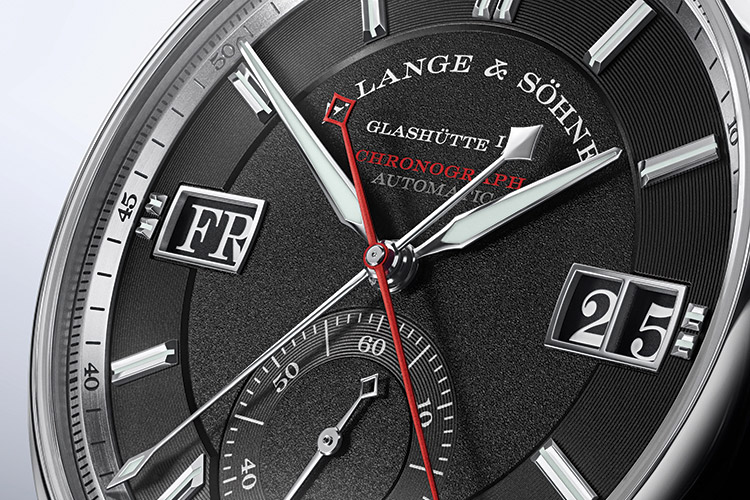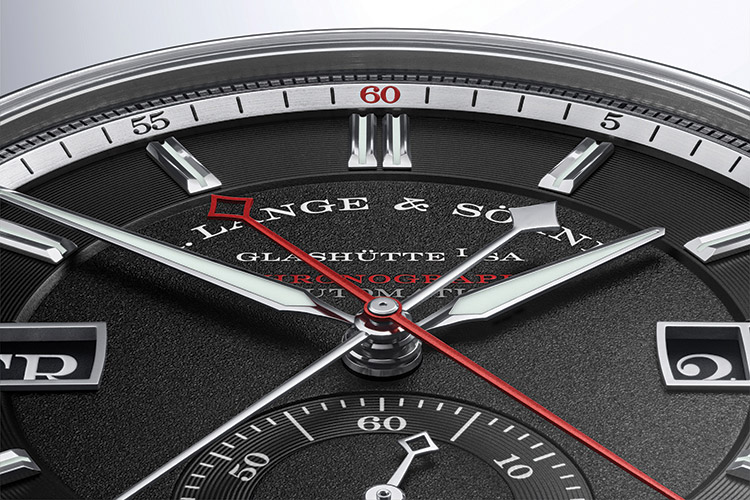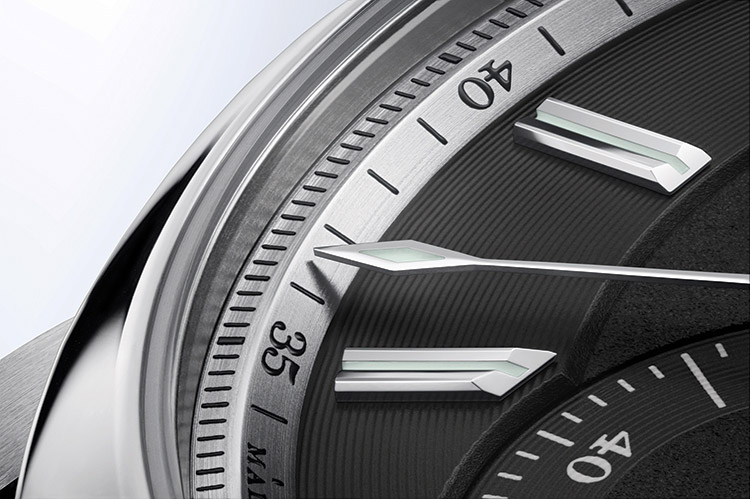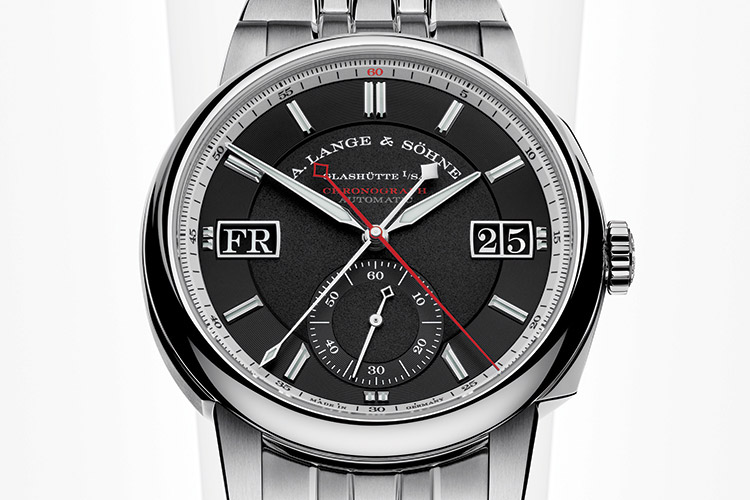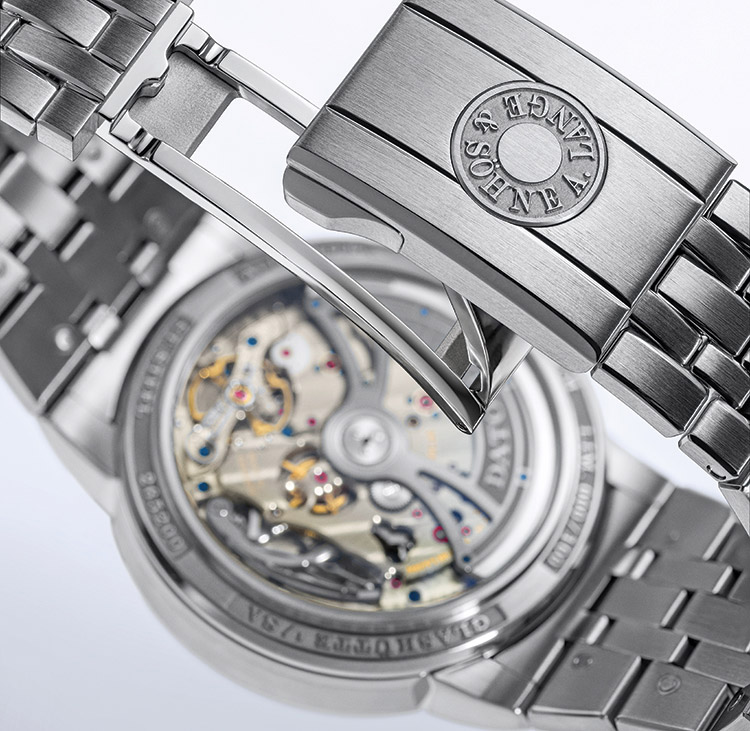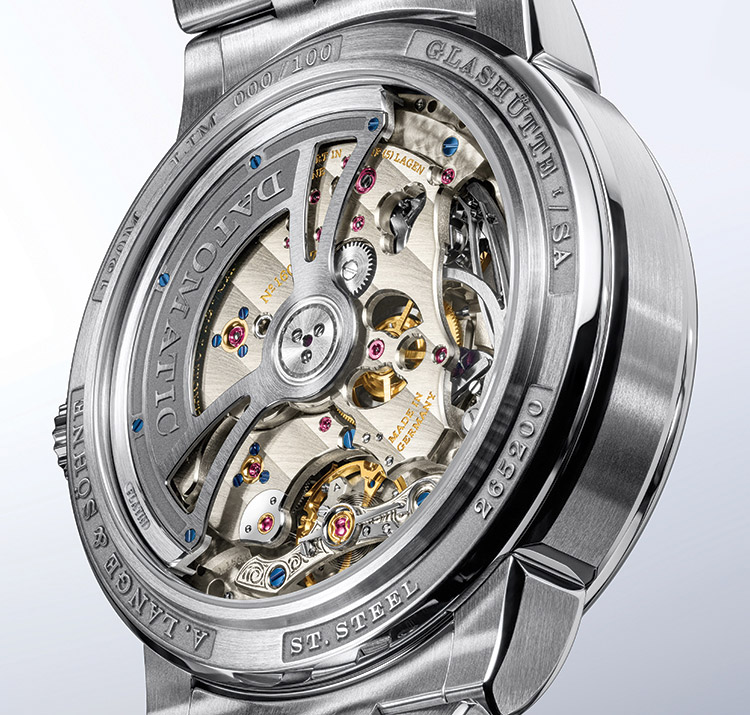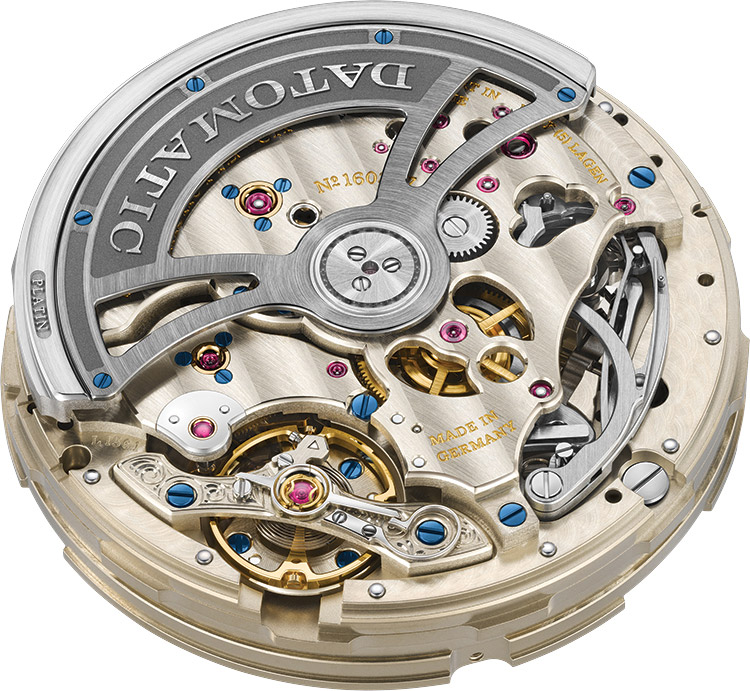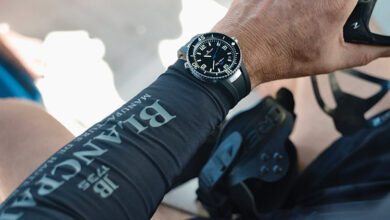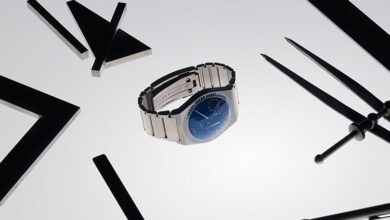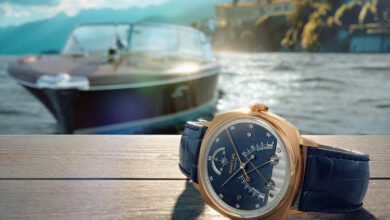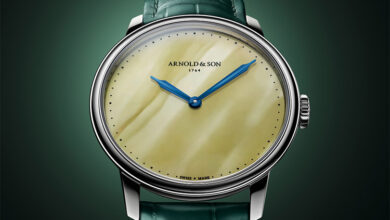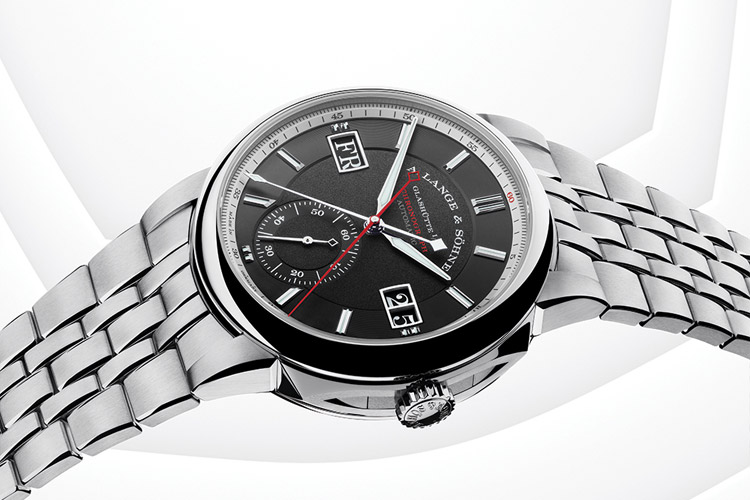
The newly developed L156.1 calibre encased in stainless steel premieres as the Odysseus Chronograph. The first A. Lange & Söhne self-winding chronograph movement features an innovative and dynamic function that resets the chronograph hands to zero. Given its horological intricacy, the Odysseus Chronograph comes in a limited edition of 100 watches
Four years ago, with the Odysseus, A. Lange & Söhne launched its first sporty-elegant timepiece, showcasing a unique design and a customised, exquisitely finished movement. Now, the Odysseus Chronograph is the sequel to the success story of this watch family.
The A. Lange & Söhne watchmakers continue to break new ground. In 2019, they redefined the category of sporty-elegant watches with the launch of the Odysseus. They ventured into uncharted territory in several respects. One of them was the development of an individual movement, customised for the novel applications ‒ the L155.1 Datomatic calibre.
Secondly, they struck a new and distinctive path when it came to designing the Odysseus: its contemporary appearance is based on openness, lightness, and the prominent features. Its narrow bezel allowed for a comparatively large dial. Together with the lancet-shaped hands and the typical Lange displays for the date and day of week, it assures excellent legibility.
With the youngest member of the Odysseus watch family, A. Lange & Söhne once again forayed into unknown territory, thus underscoring its expertise in the area of short-time measurement. To this day, designing and building a chronograph calibre is considered to be one of the greatest challenges in precision watchmaking. Only a few manufacturers possess the knowledge and ability to develop and craft a similarly complex movement. With a total of 13 manufacture movements, chronographs have been among the most coveted A. Lange & Söhne models since 1999.
To retain the characteristic dial design of the Odysseus, the manufactory developed a customised movement that positions both chronograph hands in the centre, the minute counter with a lozenge-shaped tip as well as the red chrono seconds hand. As a consequence, the totalisers, which are conventionally arranged at 3- and 9 o’clock, could be dispensed with, and the style-defining positions of the outsize date and day of the week could be maintained.
Owing to the expansion of the measuring range from 30 to 60 minutes, the Lange developers succeeded in introducing new fields of application for the chronograph. Additionally, it is endowed with an innovative, dynamic reset-to-zero function. When the reset-to-zero button at 4 o’clock is actuated after a time measurement, a short but impressive spectacle ensues: while the minute counter jumps back to its starting position in the conventional way, the red chrono seconds hand covers the entire distance travelled beforehand within a fraction of a second ‒ one full revolution for each measured minute. If the minute counter has not reached the 30-minute mark yet, the two hands move anti-clockwise. If the minute counter has passed the 30-minute mark, both hands will advance to zero clockwise. At high speed, the chrono seconds hand performs a full revolution for every minute required to reach the full hour.
To assure safe and easy operation of the chronograph, the Lange product developers equipped the specially sealed, tapered buttons with a novel dual function. In the normal position of the screw-down crown, the buttons at 2- and 4 o’clock are used to operate the chronograph functions: start, stop, and reset to zero. When the crown is pulled, the date and day of the week can be corrected with a newly developed mechanism.
The Odysseus Chronograph takes centre stage in a three-part stainless-steel case with a diameter of 42.5 millimetres that withstands a test pressure of 12 bar and is robust enough to accompany its wearer even during sports and leisure activities. As with the other members of the watch family, the surfaces are matted and the edges are accentuated with a chamfer: the combination of brushed surfaces and chamfered edges creates an impressive play of light and is echoed on the lugs and links of the solid stainless-steel bracelet.
The chronograph, which is limited to 100 watches, is equipped with a dial whose special architecture creates an illusion of depth ‒ a feature shared by the previous Odysseus models. The inner surface of the black main dial boasts a textured surface, the notched baton appliques made of white gold and the subsidiary seconds scale are underlaid with concentric circles. A palladium-coloured flange ring with a printed two-part minute scale frames the dial. The scale for the fractions of a second is positioned on the outer circumference, while the scale for minutes and seconds is arranged further inside. Printed in red, the number 60 at 12 o’clock and the red chrono seconds hand accentuate the equally elegant and dynamic appearance of the Odysseus Chronograph. The typical Lange lancet-shaped hour and minute hands, which are slightly more prominent in the watches of the Odysseus family, contrast well against the background. They are luminous as are the inner surfaces of the baton appliques.
The large displays for the date and the day of week also contribute to the timepiece’s distinctive appearance. The modern, digital aesthetics are inspired by a masterpiece of historic Saxon watchmaking artistry that is closely connected with the A. Lange & Söhne history: the Five-Minute Clock in the Dresden Semper Opera. To mark the opening of the Opera House in 1841, the famous stage clock ‒ uncommon for that period, it displayed the time digitally ‒ was created by Court Clockmaker Johann Christian Friedrich Gutkaes. He was both apprentice master and father-in-law to Ferdinand Adolph Lange, the founding father of Glashütte precision watchmaking.
The L156.1 Datomatic calibre ‒ the manufactory’s first self-winding chronograph movement ‒ powers the Odysseus Chronograph. The attribute Datomatic is derived from the words “date” and “automatic”. A skeletonised and partially black-rhodiumed central rotor with a centrifugal mass in 950 platinum assures efficient winding. When fully wound, the mainspring barrel delivers a maximum power reserve of 50 hours. The oscillation system is designed to ensure optimum rate accuracy. To this end, the balance, which beats at a frequency of 28,800 semi-oscillations per hour (4 hertz), was suspended beneath the balance bridge; it is hand-engraved with a stylised wave pattern alluding to the water resistance of the watch and the possible applications in sports settings.
The A. Lange & Söhne watchmakers have always cut their own path in crafting and finishing their movements. Thus, the L156.1 Datomatic calibre is also assembled twice to ensure maximum precision. Many unique, traditional elements are incorporated, for example bridges and plates made of untreated German silver, the hand-engraved balance bridge, or the gold chatons secured by blued screws. Additionally, all components, even those that are no longer visible once the movement is fully assembled, are, for the greater part, elaborately finished by hand. This can be admired through the sapphire-crystal caseback.
